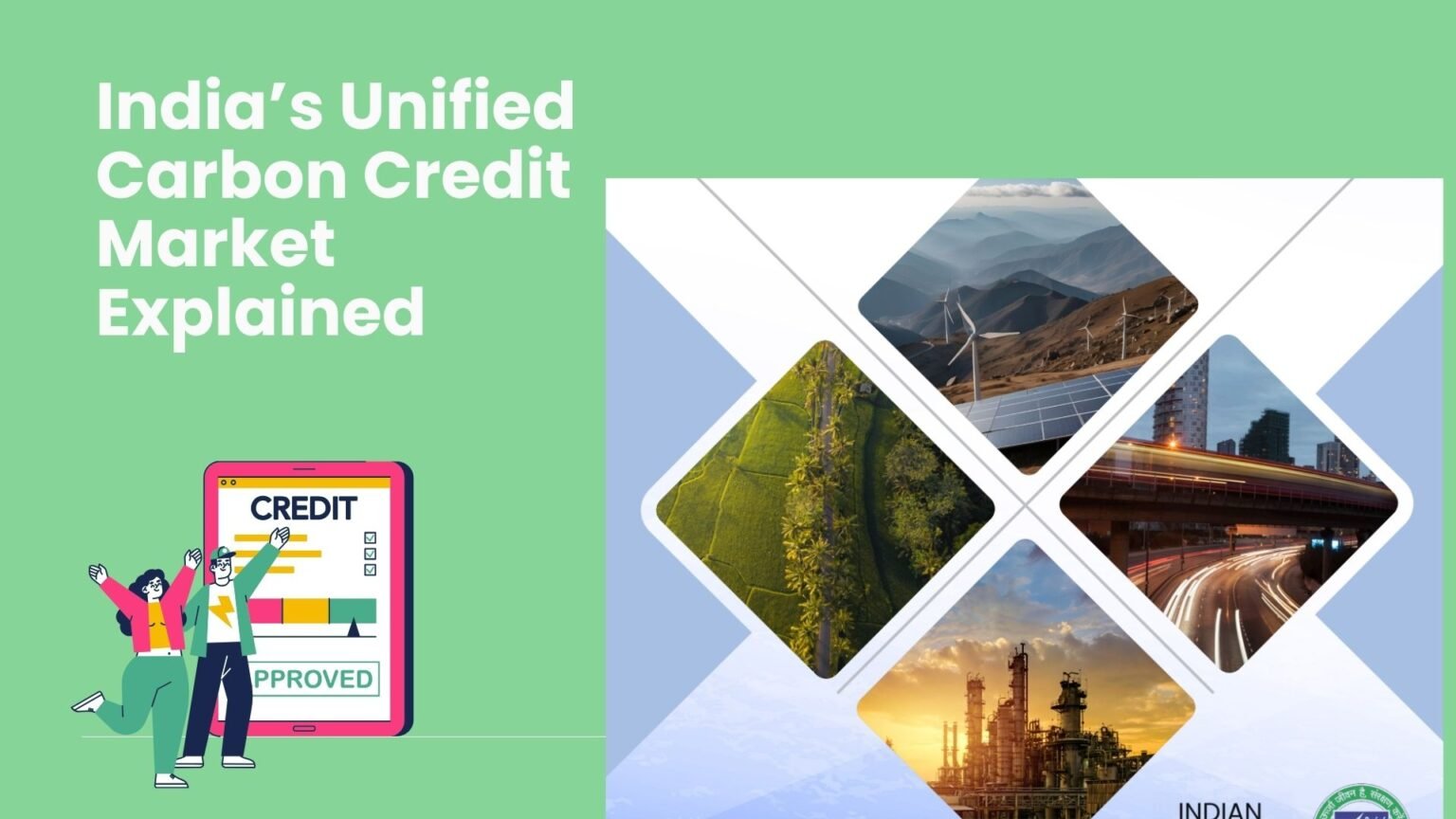Introduction: India's Green Leap into Carbon Trading
India's single carbon credit market is not only a plan—it's a committed step towards lowering carbon emissions in our expanding economy and fulfilling the ambitions of the Paris Agreement.
The Carbon Credit Trading Scheme (CCTS) was notified on 28 June 2023, through S.O. 2825(E) of the Energy Conservation Act, 2001, formally opening the carbon credit market in India.
A Proven Model
In 2020, Tesla made more profits from selling carbon credits than selling cars. Now, India is establishing its own market.
Massive Growth Potential
This market is expected to cross the $100 Billion mark by 2030, reflecting serious worldwide commitment and opportunity.
India's CCTS brings various state and sector schemes together under a single system. This facilitates more money flow and simpler prices. It is supported by a US $8 million World Bank PMR grant to enhance registries and pilot new pricing instruments.
Understanding Carbon Credits: From Concept to Cash
How a Carbon Credit Works: Step-by-Step
1. Project Idea Stage
A developer specifies a mitigation strategy (e.g., effective cookstoves, solar pumps) and posts a Project Idea Note.
2. Project Design & Validation
Develops a comprehensive Design Document. This is certified by a third-party auditor to ISO 14064 standards.
3. Implementation & Verification
The project operates, and a verifier determines real GHG reductions. No credits are given until this is complete.
4. Issuance and Trading
Each credit represents 1 tonne CO₂-e reduced. Credits are listed on exchanges (IEX, PXIL) for mandatory and voluntary buyers.
The Road to One Market: India's Policy Revolution
Piecing Together Fragmented Schemes
India's journey involved consolidating multiple existing schemes into a single, cohesive market.
| Program | Years Active | Main Feature |
|---|---|---|
| PAT Scheme (ESCerts) | 2012 – present | Energy-Saving Certificates for 13 sectors; six cycles, saving ~47 Mt TOE to date |
| REC Scheme | 2010 – present | Wind, solar, etc. Renewable Energy Certificates. |
| CCTS (Integrated Carbon Market) | Launched 28 Jun 2023 | Single market for compliance & voluntary credits |
Inside CCTS: India's Carbon Credit Trading Scheme Explained
Certificates
Carbon Credit Certificates (CCC) are issued to obligated parties that overachieve their GHG targets. Entities that miss their targets must purchase CCCs to comply.
Compliance vs. Voluntary
The compliance mechanism sets targets for large industries. The voluntary mechanism is now expanded to airlines, DISCOMs, and corporates with SBTi commitments.
Trading Rules
Unit fungibility is improved so ESCerts, RECs, and CCCs can move in one market. Trading will shift from 3-year cycles to yearly auctions for better liquidity.
Linking Local Efforts to Global Objectives
India's Paris Agreement Promises
Current NDC: 33–35% reduction in GHG intensity by 2030 (from the 2005 level).
Article 6.2 Pathways: CCTS provides the architecture for transferring mitigation results across borders once global standards are established.
Key Beneficiaries: Who Gains in India's Carbon Economy?
Power Plants & Heavy Industry
Have the potential to leverage over-achievement by selling surplus Carbon Credit Certificates (CCCs).
New Age Startups
MRV software providers, blockchain record keepers, and verification companies will see a surge in demand.
Green Agriculture and Renewables
Voluntary funds can be used by project developers to develop solar irrigation, biomass, and biogas projects.
Challenges Ahead: Holding Markets to Account
Price Discovery Puzzles
Balancing the surplus of ESCerts from the PAT scheme with new demand from the voluntary market will be crucial for stable pricing.
Data-Driven Monitoring
Ensuring the accuracy of activity data and emission factors is paramount for the integrity of the credits issued.
Enforcement and Anti-Fraud
All Accredited Carbon Verification (ACV) agencies must be ISO 14065 accredited, with independent check verifications.
Tech to the Rescue: Digital Tools Fuel Carbon Trading
Blockchain Registries
Create immutable ownership trails to prevent the critical issue of double-counting carbon credits.
MRV Systems
Real-time dashboards using centralized IoT sensors can provide up-to-the-minute data for verification.
Clear Audit Trails
Automated data capture eliminates manual errors and significantly reduces the risk of fraudulent reporting.
India and the World: Carbon Markets Compared
Here is how India's nascent market pricing compares to established international systems.
| Market | Launch & Scope | Price Range (Recent) |
|---|---|---|
| EU ETS | 2005; heavy industry + power | €25–€54/tonne (Phase 1–3) |
| China ETS | 2021; power (2225 entities) | ¥60–¥80/tonne |
| California Cap-and-Trade | 2012; multi-sector | US $20–US $30/tonne |
| India CCTS | 2023; voluntary + compliance | Emerging; est. ₹500–₹800/credit |
The size of the market for carbon credits in India is projected to surpass ₹10,000 Cr by 2030 on the strength of compliance and voluntary offsets.
Also Read: Top 20 AI Startups in Bangalore Hiring Freshers (2025)!Looking Ahead: What India's Carbon Marketplace Will Be Like
Policy Reforms
Expect compliance cycles to be compressed to 1 year and coverage to expand to industries beyond the initial 13 PAT sectors.
Market Development (2025-30)
SBTi, CORSIA, and RPO compliance will drive domestic demand, estimated at 10–12 Mt CO₂e/year.
Global Integration (2030-35)
Focus will shift to cross-border Article 6 transactions, with potential integration with ASEAN and EU markets.
Conclusion: Building a Greener, More Prosperous Future
Every member, from farmers sequestering carbon in soils to financiers trading credits, has a role in India's mass carbon credit movement.
With strict regulation, state-of-the-art monitoring technology, and active involvement by businesses, India is poised to take the lead in sustainable growth and the global fight against carbon emissions.







Pingback: Aakaar Medical Technologies IPO GMP - Tech Venture Spot